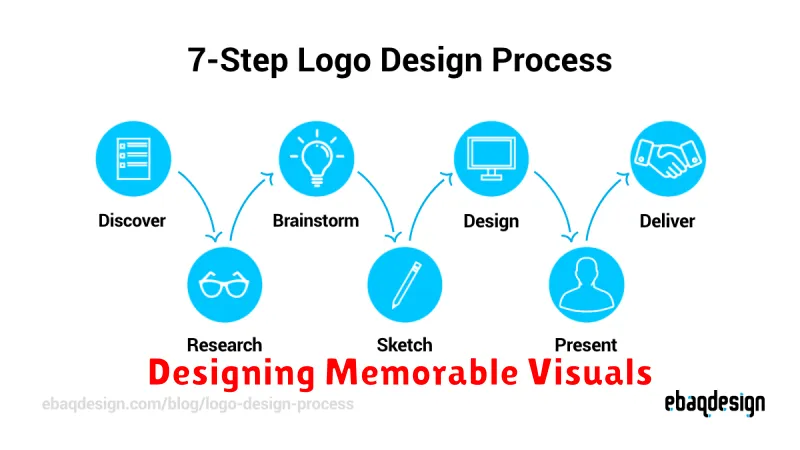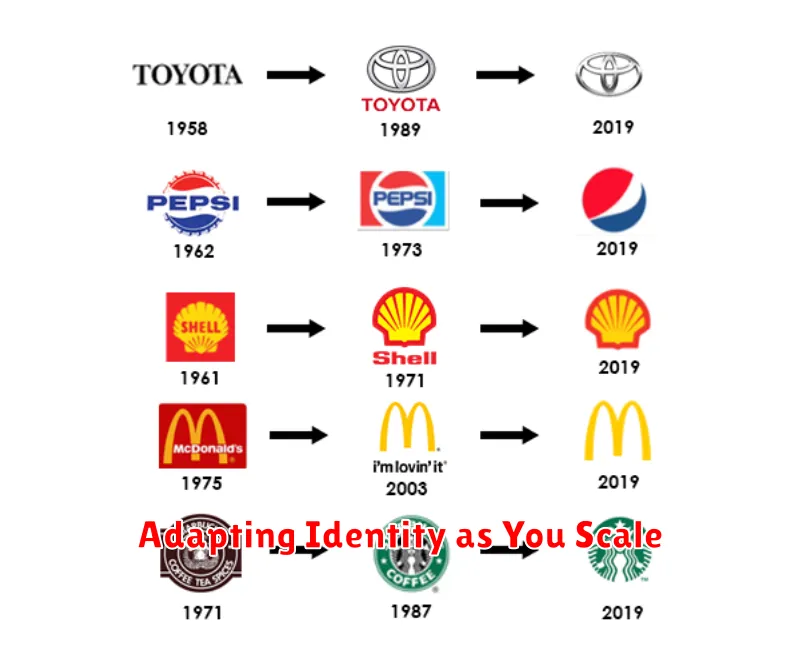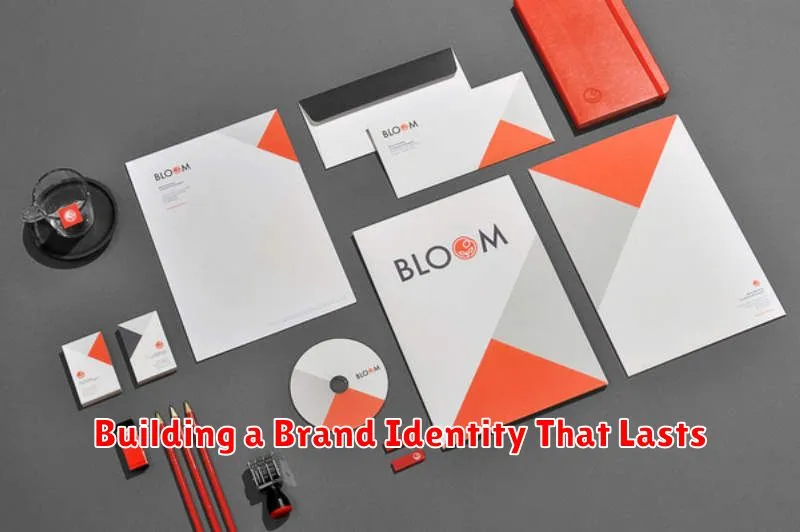In today’s competitive market, a strong brand identity is more crucial than ever. It’s the foundation upon which lasting customer relationships are built, driving not only recognition but also brand loyalty and ultimately, business growth. Building a brand identity that lasts requires a strategic approach, encompassing a deep understanding of your target audience, a clearly defined brand message, and a consistent visual representation across all platforms. This article will delve into the essential elements of crafting a brand identity that resonates with your audience and stands the test of time, covering everything from defining your brand values to developing a comprehensive brand strategy.
Beyond simply a logo or tagline, a lasting brand identity becomes synonymous with the essence of your business, communicating your unique value proposition and forging a connection with consumers on an emotional level. Investing time and effort in building this brand identity is an investment in the future of your business, ensuring long-term success and differentiation in a crowded marketplace. Discover the key principles and practical steps involved in building a brand identity that not only attracts customers but also cultivates brand loyalty and sustains business growth for years to come. This exploration will equip you with the knowledge to create a truly impactful brand that resonates with your target audience and solidifies your position within the industry.
Why Brand Identity Matters
Brand identity is the face your company presents to the world. It encompasses all the visual and experiential elements that communicate your values, personality, and promise to customers. A strong brand identity fosters recognition, builds trust, and differentiates you from competitors in a crowded marketplace. It’s the foundation upon which customer loyalty and long-term success are built.
A well-crafted brand identity provides numerous benefits. It helps attract and retain customers by creating a consistent and memorable experience. This consistency builds credibility and reinforces the value proposition you offer. Furthermore, a strong brand identity can command premium pricing, as customers are often willing to pay more for brands they trust and connect with. It also simplifies decision-making for internal teams, providing a clear framework for marketing efforts and product development.
Key components of a successful brand identity include a distinctive logo, consistent visual style (typography, color palette, imagery), a clearly defined brand voice, and a compelling brand story. These elements work together to create a cohesive and impactful impression that resonates with your target audience and strengthens your market position.
Key Elements of a Strong Brand
A strong brand is built on several key elements that work together to create a lasting impression on consumers. Brand identity is paramount, encompassing the visual elements like logos and color palettes, as well as the brand’s voice and personality. A well-defined brand identity ensures consistency across all platforms and fosters recognition. Value proposition is another crucial element, clearly articulating the unique benefits a brand offers to its target audience. This distinguishes a brand from competitors and communicates why customers should choose it.
Brand experience is the cumulative effect of all interactions a customer has with a brand. This includes customer service, product quality, and marketing efforts. A positive brand experience fosters loyalty and advocacy, turning customers into brand ambassadors. Brand reputation, earned over time, reflects public perception and trust in the brand. A strong reputation builds credibility and attracts new customers.
Maintaining a strong brand requires ongoing effort and adaptation. Regularly assessing these key elements ensures the brand remains relevant and resonates with its target market. By consistently delivering on its promises and nurturing customer relationships, a brand can build long-term success and establish a strong presence in the market.
Defining Your Brand Voice
Your brand voice is the personality and emotion infused into all your communications. It’s how you speak to your audience, reflecting your values and establishing a consistent identity. A well-defined brand voice fosters recognition and builds stronger connections with your target market. It differentiates you from competitors and clarifies your messaging across all platforms.
Key components of a brand voice include: tone (e.g., formal, informal, playful), language (e.g., technical, simple, sophisticated), and purpose (e.g., informative, entertaining, persuasive). Consider your target audience and what resonates with them. Are they professionals seeking expertise? Or a younger demographic drawn to humor? Aligning your voice with their expectations fosters engagement and builds trust.
Developing a strong brand voice requires consistency. Document your brand voice guidelines clearly, outlining the do’s and don’ts of your communication style. This ensures all team members, from marketing to customer service, project a unified and recognizable brand personality. Regularly review and update these guidelines to maintain relevance and adapt to evolving market trends.
Designing Memorable Visuals

Creating impactful visuals requires a keen understanding of design principles. Simplicity is paramount; a clean and uncluttered design allows the core message to resonate effectively. Contrast, achieved through color, size, or shape variations, draws the eye and highlights key elements. Balance, whether symmetrical or asymmetrical, creates visual harmony and ensures a pleasing aesthetic. By thoughtfully employing these principles, designers can ensure their visuals are both engaging and easily understood.
Another critical aspect of memorable visual design is audience consideration. Understanding the target demographic’s cultural background, age, and interests is essential for crafting visuals that connect on a deeper level. Visuals should be tailored to resonate with the audience’s existing knowledge and preferences, using familiar imagery and symbolism to evoke specific emotions and associations. This targeted approach significantly enhances the effectiveness and memorability of the design.
Finally, testing and iteration are crucial steps in the design process. Gathering feedback from the target audience allows designers to identify areas for improvement and ensure the visuals effectively communicate the intended message. This iterative process allows for refinement and optimization, resulting in a final product that is both visually appealing and achieves its communication objectives.
Creating a Consistent Experience
Creating a consistent experience for users is crucial for building trust and loyalty. Consistency encompasses various aspects, including visual design, user interface, navigation, and overall brand messaging. When users encounter predictable patterns and interactions, they feel more comfortable and confident engaging with your product or service. This leads to increased satisfaction and encourages repeat usage.
Key elements contributing to consistency include maintaining a unified visual identity, utilizing standardized design patterns, and ensuring seamless transitions between different sections or functionalities. By prioritizing consistency, you minimize confusion, reduce the learning curve, and ultimately, create a more positive user experience.
Furthermore, a consistent experience strengthens brand recognition. A cohesive brand presence across all touchpoints reinforces your message and values, making your product or service more memorable and impactful. Consistency breeds familiarity, and familiarity builds trust, a vital ingredient for long-term success.
Storytelling and Emotional Connection
Storytelling is a powerful tool for building emotional connections with an audience. By crafting narratives that resonate with human experiences, storytellers can tap into fundamental emotions, fostering empathy, understanding, and engagement. Whether it’s a personal anecdote, a fictional tale, or a brand narrative, the ability to evoke emotions through storytelling can be incredibly impactful. A well-told story can make information more memorable and relatable, increasing its effectiveness.
Effective storytelling involves several key elements. A compelling narrative arc, engaging characters, and a clear message are crucial for capturing attention and holding interest. Additionally, the use of vivid language and sensory details can further enhance the emotional impact of a story. By carefully crafting these elements, storytellers can create experiences that resonate deeply with their audience.
The benefits of using storytelling to create emotional connections are numerous. From building stronger relationships with customers to inspiring action and driving social change, the power of narrative is undeniable. By understanding the principles of effective storytelling, individuals and organizations can leverage this powerful tool to achieve a variety of goals.
How to Stay Authentic Over Time
Staying true to yourself, especially as you grow and change, can feel challenging. It requires self-awareness – understanding your values, beliefs, and passions. Regularly reflect on what truly matters to you. As you experience new things and encounter different perspectives, consider how they align with your core self. Don’t be afraid to evolve, but ensure that changes feel genuine and not driven by external pressures.
Authenticity also involves acting in accordance with your values. This means making choices that reflect what you believe in, even when it’s difficult. It might mean setting boundaries, saying “no” to things that don’t align with your priorities, or speaking up for what you believe is right. Consistency between your internal values and external actions reinforces your sense of self and builds trust with others.
Finally, embrace vulnerability. Authenticity isn’t about perfection; it’s about being real. This means being willing to share your imperfections and admit when you’re wrong. It means allowing yourself to be seen for who you truly are, without pretense or a carefully constructed facade. By embracing vulnerability, you deepen your connections with others and strengthen your own sense of authenticity.
Brand Identity vs Brand Image
Brand identity is the way a company wants to be perceived by its target audience. It’s a carefully crafted strategic plan encompassing the company’s mission, values, personality, and visual elements like its logo, color palette, and typography. It’s the foundation upon which all brand communications are built. Think of it as the company’s self-expression, the message it actively sends out to the world.
Brand image, on the other hand, is the actual perception of the brand held by consumers. It’s the result of their interactions and experiences with the brand, influenced by everything from marketing campaigns and customer service to product quality and reviews. It’s not always aligned with the intended brand identity and represents the public’s interpretation of the brand.
Ideally, a strong brand identity fosters a positive brand image. When these two align, it creates brand consistency and resonance, ultimately leading to increased brand loyalty and equity. However, inconsistencies between the intended identity and perceived image can damage a brand’s reputation and erode trust. Continuous monitoring and adjustments are essential to ensure alignment.
Measuring Brand Perception
Measuring brand perception involves gauging how consumers view and feel about your brand. This goes beyond simple brand awareness (knowing your brand exists) and delves into the associations, emotions, and beliefs they hold regarding your brand. Accurately understanding brand perception allows you to identify strengths, weaknesses, and areas for improvement in your brand strategy.
Several methods are available for measuring brand perception. Surveys are a common approach, using questionnaires to directly ask consumers about their thoughts and feelings. Social listening helps monitor online conversations and mentions, providing valuable insights into public sentiment. Focus groups offer a deeper understanding through guided discussions with small groups of consumers. Analyzing customer reviews and feedback also provides important data points about brand perception.
By consistently measuring brand perception, businesses can make data-driven decisions to strengthen their brand. Tracking these metrics over time allows for monitoring the effectiveness of brand-building initiatives and making necessary adjustments to enhance brand image and resonate with target audiences. This leads to stronger customer loyalty, increased brand equity, and ultimately, better business outcomes.
Adapting Identity as You Scale

As your company grows, your brand identity must evolve to stay relevant and resonate with a broader audience. What worked for a small startup might not be suitable for a larger, more established organization. Consistency is key during this transition, ensuring that your core values and mission remain recognizable while adapting your messaging and visuals to reflect your growth and expanded market reach. This might involve refining your logo, updating your website, or adjusting your brand voice to maintain a unified and professional image.
Scaling also presents an opportunity to re-evaluate your target audience. Your initial customer base might have different needs and expectations compared to the customers you attract as you grow. Understanding these evolving demographics and their preferences is crucial for tailoring your brand identity to effectively connect with them. Conducting market research and analyzing customer feedback can provide valuable insights into how your brand is perceived and what adjustments are needed to strengthen your market position.
Finally, internal communication plays a vital role in successfully adapting your identity. Ensure that all employees understand the changes and are equipped to represent the brand consistently. This includes providing clear guidelines on brand usage, offering training on updated messaging, and fostering a shared understanding of the company’s evolving identity. A cohesive internal understanding will translate into a stronger, more consistent external projection of your brand, reinforcing its credibility and impact in the market.

